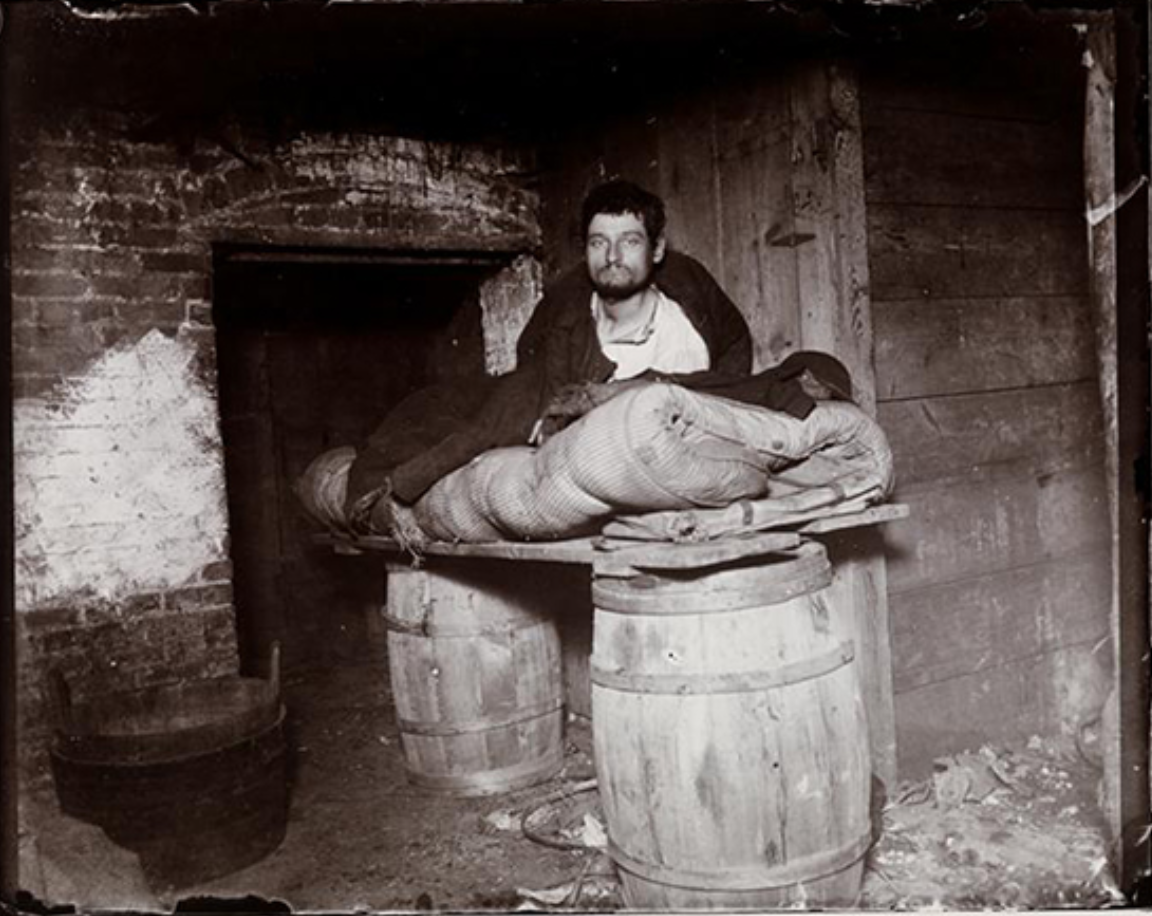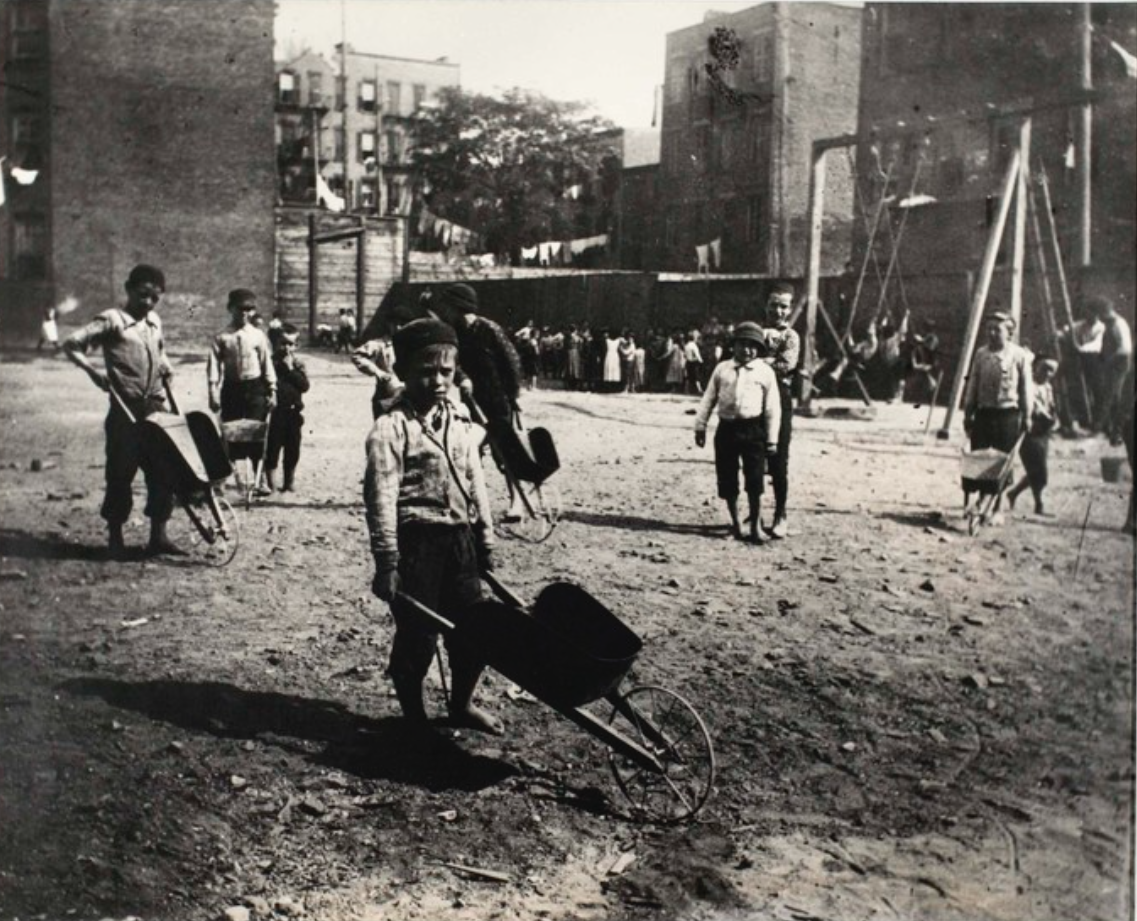Johnson, "Light"

The Publication
The Beginning Of the Story
“I joined the great army of tramps, wandering about the streets in the daytime with the one aim of somehow stilling the hunger that gnawed at my vitals, and fighting at night with vagrant curs or outcasts as miserable as myself for the protection of some sheltering ash-bin or doorway.”
~ The Making of an American, Jacob Riis, 1901

A man atop a make-shift bed that consists of a plank across two barrels, Jacob Riis, 1890.
Jacob Riis immigrated to New York from Denmark in 1870, being a part of the wave of new immigrants that were attempting the American Dream. He tried various jobs with little success, falling into poverty.
Eventually, Riis secured a job as a police reporter in the Lower East Side. His own experience in the slums invigorated him to take advantage of his new opportunity and document the people in the tenements. Riis felt the need to take on this task due to the governmental lack of action in addressing the issue of the slums. In doing so, Riis advocated for the rights of those living in them, which were previously neglected by the government.
"What place is this, to which the street conducts A kind of square of leprous houses, some of which are attainable only by crazy wooden stairs without. What lies beyond this tottering flight of steps, that creak beneath our tread?—a miserable room, lighted by one dim candle, and destitute of all comfort, save that which may be hidden in a wretched bed."
~ America Notes For General Circulation, Charles Dickens, 1842
“[In] the old garden where the stolid Dutch burgher grew his tulips or early cabbages a rear house was built, generally of wood, two stories high at first. Presently it was carried up another story, and another. Where two families had lived ten moved in.”
~ How the Other Half Lives, Jacob Riis, 1890
Throughout the publishing process of How The Other Half Lives, Riis took on the responsibility of documenting and taking photos of the poor housing conditions in the tenement homes. He sought to spread awareness by inciting public outrage over the quality of life some people had to endure.

Childrens' Playground in Poverty Gap, Jacob Riis, 1889.
“[It was] soon perceived by estate owners and agents of property that a greater percentage of profits could be realized by the conversion of houses and blocks into barracks, and dividing their space into smaller proportions capable of containing human life within four walls.”
~ How the Other Half Lives, Jacob Riis, 1890